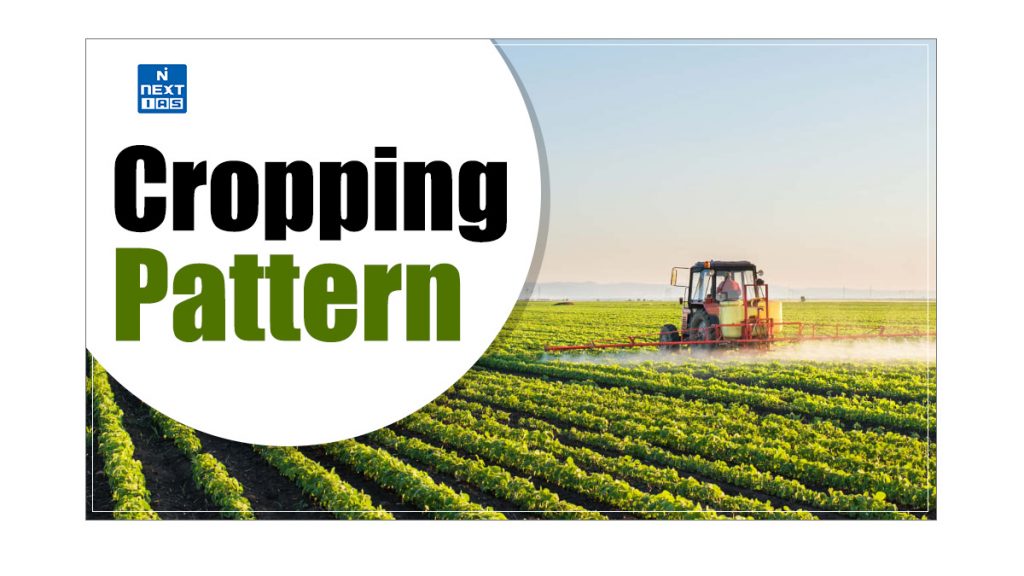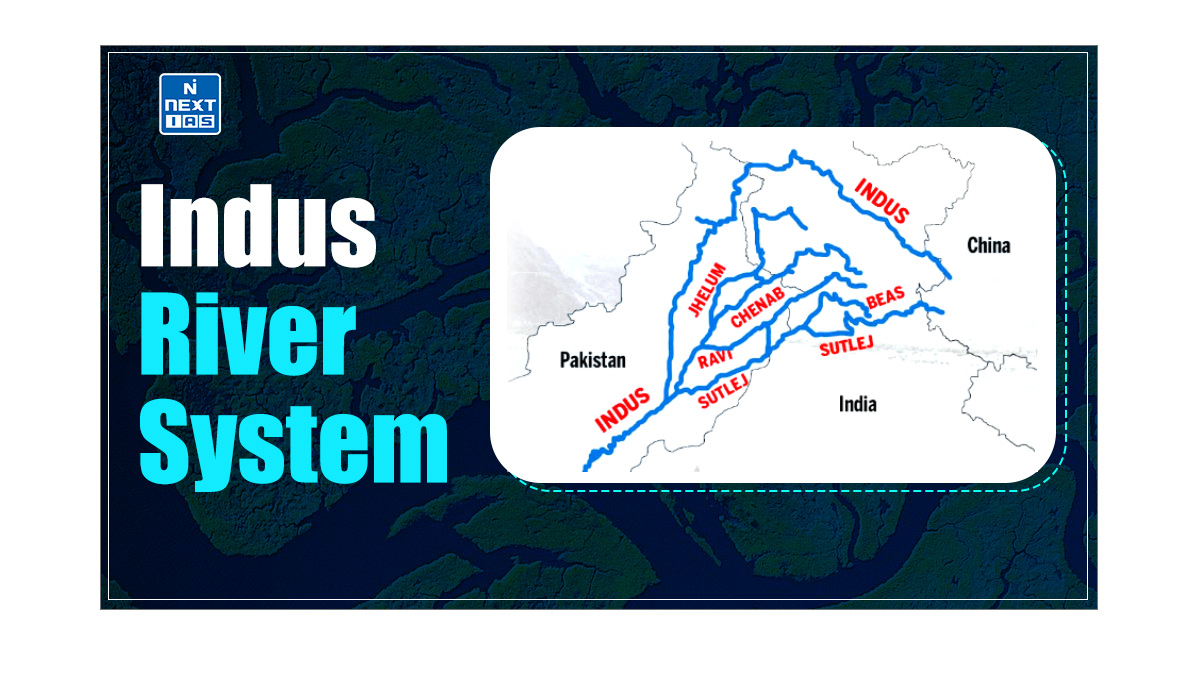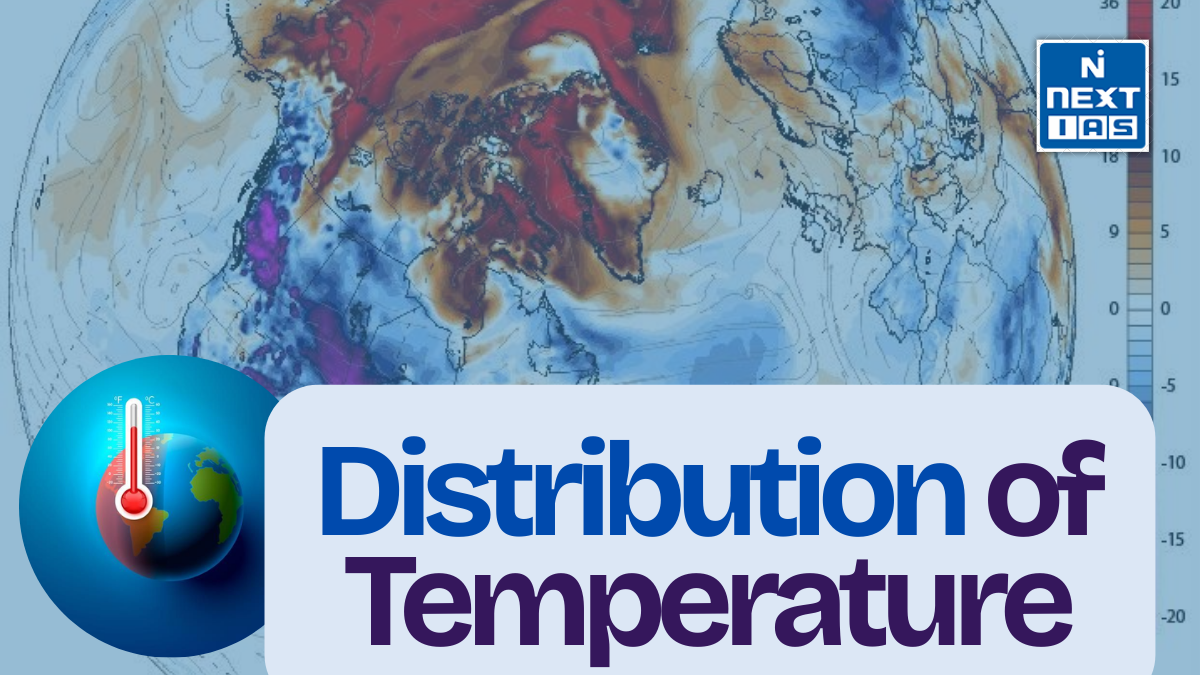
Cropping patterns in India refer to the different crops cultivated in a specific area during a given period, influenced by climate, soil, and market demand. Understanding these patterns is crucial for optimising agricultural practices, ensuring food security, and enhancing economic viability. This article aims to study in detail the meaning and the factors affecting cropping patterns in India.
What are Cropping Patterns?
- The different crops grown in an area at a particular point in time are called cropping patterns.
- The cropping pattern in India depends on climate (temperature, rainfall, wind, etc.), soil, support price, value, demand-market, and labour availability.
- For instance, rice is cultivated extensively when the monsoons are good.
- But when monsoons are weak, millets are grown instead of rice.
- Also, due to highly favourable cultivation conditions, crops like Cotton in Maharashtra, Tea in Assam, and Jute in West Bengal remain the dominant crops.
Types of Cropping Pattern in India
- The major types of cropping patterns include mono-cropping, where the same crop is grown on the same land year after year.
- Multiple cropping involves growing two or more crops on the same land in a single year (further divided into intercropping, where different crops are grown together, and sequential cropping, where different crops are grown one after another).
- Mixed cropping, where different crops are grown simultaneously on the same land without a distinct row arrangement.
- Additionally, relay cropping is a form of multiple cropping where the second crop is planted before the first crop is harvested.
- These patterns are adopted based on the need to maximise yield, optimise resource use, and manage risks such as crop failure due to pests or adverse weather conditions.
Factors Affecting Cropping Pattern in India
- The cropping pattern of any region depends upon many factors, such as:
- Geographical Factors.
- Economic Factors.
- Political Factors/Government Policies.
- Historical Factors.
All these factors affecting the cropping pattern in India have been discussed in detail in the following section.
Geographical Factors
The various geographical factors affecting the cropping pattern of an area are:
Relief
- Relief plays a vital role in deciding a region’s cropping pattern. Rice is the main crop on irrigated hill terraces (terraced cultivation).
- Also, crops like Tea and Coffee can be grown only on well-drained slopes with good rainfall.
- Rice (tropical crop) and Sugarcane dominate well-irrigated regions with warm climates.
- Wheat (temperate crop) grows well in regions with moderate temperatures and rainfall.
Rainfall
Rainfall is one of the significant determinants of a region’s cropping pattern. Variation in rainfall of different regions leads to different cropping patterns, which are as follows:
- Areas of Heavy Rainfall – These areas receive more than 150 cm of annual rainfall. They include East India and the West Coast plains.
- The animal population is fairly high due to the availability of fodder and grazing areas.
- Major crops include rice, tea, coffee, sugarcane, jute etc.
- Areas of Medium Rainfall – These areas have 75 to 150 cm of annual rainfall.
- The annual rainfall of 150 cm isohyets is suitable for cultivating rice, whereas 75 cm isohyets is suitable for maize, cotton, and soybeans.
- These areas are rich in natural resources, e.g., the eastern part of Uttar Pradesh, Bihar, Odisha, the eastern parts of Madhya Pradesh, and the Vidarbha region of Maharashtra.
- Wheat is the principal Rabi crop in these areas, and millets are the natural priority due to their less water requirement.
- The major crops are wheat, maize, cotton, soybeans, millet, etc.
- Areas of Low Rainfall – These areas have 25 to 75 cm (Semi-arid stretches of India) of annual rainfall.
- Major crops in this belt are millets, jowar and bajra in the northern, jowar in the central and ragi in the southern part.
- Wheat is the main Rabi crop grown in irrigated areas. Mixed cropping, where pulses are mixed with cereals, is very common.
- Cropping has been developed so that no one crop dominates. Dryland farming is a common practice in this region.
- Millets, oilseeds (Groundnut, sunflower, rapeseed, and mustard), pulses, etc., are the major crops grown in this region.
Soil
- The soil of a region is an essential determinant of the cropping pattern. Different crops require different edaphic conditions for their growth and development.
- Rice is mainly grown in clayey soils, while wheat thrives in loamy soils. The regur soil of the Deccan Plateau is ideal for cotton cultivation.
- Coarse grains such as jowar, bajra, maize, ragi, and barley are grown in inferior soils (light sandy soils, light black soils, red and literate soils, etc.).
- The delta soils of West Bengal are renewed by floods every year and are very fertile.
- They are ideal for jute cultivation. Farmers grow 2-3 crops in a year in this region.
- The soils of the Darjeeling hills contain sufficient humus, iron, potash, and phosphorus for tea bush growth.
Economic Factors
Economic factors are among the most important in determining the cropping pattern of the country. Among the various economic factors affecting cropping patterns, irrigation, power, size of land holdings, the sale price of crops, the income of farmers, insurance and investment are important ones that decide the cropping pattern of an area. Some of them are discussed as follows:
Irrigation
- Rice is a dominant crop in regions with reliable irrigation and a warm climate (coastal plains and irrigated belts of South India).
- North Indian plain regions are well irrigated and support 2-3 rice crops yearly.
- Crop diversification in certain areas has been negligible due to irrigation.
- For example, rice dominates in well-irrigated parts of south India, and wheat dominates the northwestern part of the country.
- However, coarse grains like Jowar, Bajra, Maize, Barley, Ragi etc., are given comparatively less importance in these regions.
- For example, rice dominates in well-irrigated parts of south India, and wheat dominates the northwestern part of the country.
Size of Land Holdings
- In the case of small holdings, the farmers’ priority would be to grow food grains for their family members (subsistence farming).
- Farmers with large holdings can opt for cash and help in crop diversification, leading to changes in cropping patterns (commercial farming).
- However, despite the potential for crop diversification, large holdings are used mostly for the monoculture of rice, wheat, etc.
Insurance Against Risk
- The need to minimise the risk of crop failures explains diversification and some specific features of crop patterns.
- For example, in Southern states, plantation crops are grown on a large scale due to the availability of suitable crop insurance schemes.
Availability of Inputs
- Seeds, fertilisers, water storage, marketing, transport, etc., also affect a region’s cropping pattern.
Value
- Millets in the hilly areas of Himachal Pradesh and Uttarakhand are replaced by high-value horticulture crops like apples.
Demand
- Rice is the preferred crop in densely populated regions due to its high demand and availability of a ready market.
Political Factors
- Government legislative and administrative policies can also influence cropping patterns in India.
- Food Crops Acts, Land Use Acts, Intensive schemes for Paddy, Cotton and Oilseeds, Subsidies, etc., affect the cropping pattern in India.
- The government can encourage or discourage certain crops due to various reasons, such as Drought, Flood, Inflation, etc.
- The government’s provision of MSP (Minimum Support Price) to farmers also deteriorates the cropping pattern, as farmers prefer the crops that provide them with higher MSP, leading to a monoculture of cropping patterns in India.
Historical Factors
- It refers to the long-term cultivation of various crops in the area due to different historical reasons.
- E.g. Tea plantation by the British in the Kangra Valley of Himachal Pradesh.
- Sugarcane is grown more extensively in North India even though the conditions are most favourable in South India.
- This is because sugarcane cultivation was encouraged by the British as an alternative to indigo which lost its significance and market in states like Uttar Pradesh due to the introduction of artificial dyes.
- Diversification of crops due to surplus food grain production post-Green Revolution has led to significant changes in cropping patterns in India.
- Other than rice and wheat, oilseeds and pulses also became more prominent.
Conclusion
Cropping patterns in India are shaped by a complex interplay of geographical features, economic conditions, political influences, and historical practices. These patterns vary significantly across regions due to climate, soil, and resource availability differences. By examining these influences, we gain insights into how and why certain crops dominate in specific areas and how these patterns can be managed to enhance agricultural efficiency and sustainability. Understanding these dynamics is crucial for developing targeted strategies to improve crop production and address regional agricultural challenges.
Frequently Asked Questions (FAQs)
What is Crop Pattern?
A cropping pattern refers to the arrangement and sequence of crops grown on a particular piece of land over a period of time.
What are the 3 types of cropping patterns?
The three types of cropping pattern are:
– Mono Cropping,
– Multiple Cropping, and
– Mixed Cropping.






